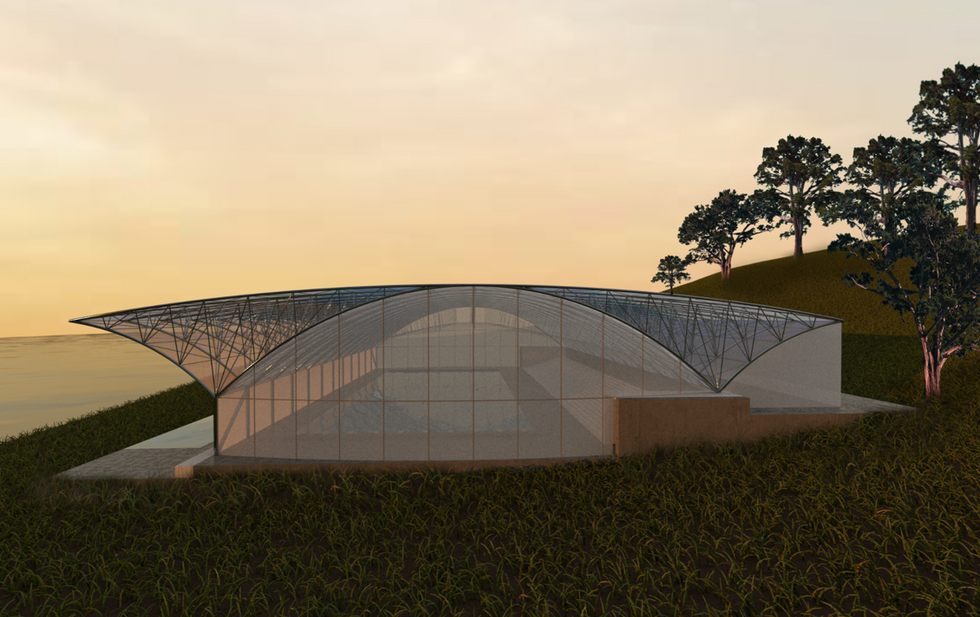Swimming Pavillion (Reimagining of the Sutro Baths)
The Sutro Baths were developed in 1894 by Adolph Sutro, same developer of Sutro Heights and the Second Cliff House. With an interest in natural, marine, and cultural studies, the original baths contained: an ocean pool aquarium, natural history exhibits, galleries of sculptures, paintings, and even a mummy. Events held at the Sutro Baths included concerts and talent shows with amenities like restaurants and natural, sea-fed salt pools for recreational and health-focused bathing. The power of the Pacific Ocean during high tide would fill the 1.7 million gallons of water required for all the pools in just one hour, providing refreshed salt water for bathing and recreation.
Our team’s Proposal is to bring these baths back to San Francisco with an Olympic sized swimming and recreational pool facility. The concept for the pavilion utilizes the existing historic site and retains architectural notes from its original structure. Seen here, the three. iron-vaulted truss systems from the 19th century structure span a series of pools. With this concept in mind, we propose spanning one Regulation Olympic pool with a single vault, mimicking the three seen above with cantilevers on either side, providing for an outdoor recreational pool facing the Pacific Ocean and an entrance hall facing San Francisco per the original design layout. Exiting the main vaulted space will bring you to the recreational swimming pool, infinite edge facing the Pacific Ocean. The three dimensionality of the steel truss system conjures the ever-moving Ocean. With glass walls and ceiling, the turning water and reflecting light will create a lucid aquatic ambiance, blending site with structure through form and materiality. Ultimately, the goal of our reimagined Sutro Pavilion is to revitalize the past but through a decidedly contemporary perspective, bringing the experience of these incredible aquatic facilities to a contemporary clientele, utilizing the historic site, and connecting sport to the landscape in which it resides. (Academic Project in Partnership with Todd Anderson, Vanessa Giraldo, and Sophie Schnietz)










